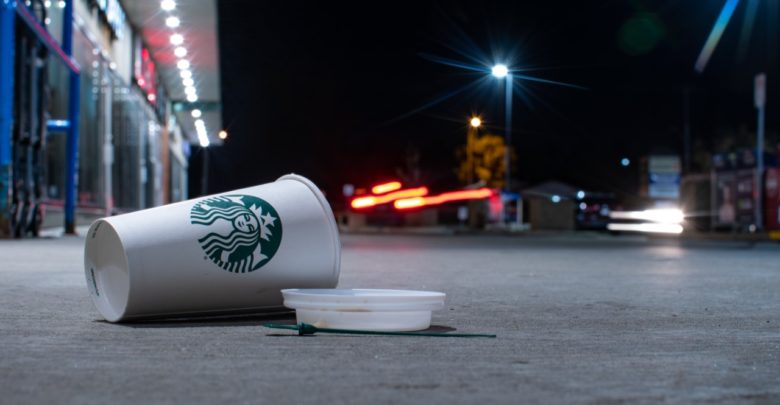To-go mugs are back…everywhere but here. Why?
The decline of reusable items points to bigger issues in North American corporate practices
 Cody Shimizu
Cody ShimizuIt’s 7 a.m. and you’re packing your bag for school with the daily essentials: laptop, snacks, water bottle, and of course, coffee mug. To get your Starbucks fix, you wait in the ridiculously long morning lineup, only to face disappointment: when you hand the barista your reusable mug, they inform you that Starbucks is no longer accepting them due to the pandemic.
This sad reality began in March and environmentally conscious coffee lovers have been mourning ever since. There may have been a brief glimmer of hope last month at the sight of a Starbucks press release. It announced that, after many months of careful study, Starbucks had come up with a completely contactless new technology to solve the issue: a ceramic cup. Simply place your to-go mug in the cup, and off your barista goes making your chai tea latte. To the confusion of many however, this revolutionary technology is only available in Asia, the Middle East, and Europe. The reasoning behind this exclusion of North America is mysterious.
One possible explanation is suggested by the environmental organization Greenpeace, which points to the influence of the single-use plastics industry during this pandemic. It’s important to note to-go mugs aren’t the only reusable item that has become increasingly hard to use; preferences for single-use grocery bags over reusable totes, gloves, and of course disposable masks, are all adding further to the amount of plastic we send to the landfill. Despite health experts saying that reusables “can be used safely by employing basic hygiene,” reusable items have consistently been criticized and outright banned. Lysol isn’t the only company profiting these past few months; mass producing single-use plastics right now is very lucrative and these industries can continue to ride the gravy train in the name of public safety.
Perhaps this exclusion also has to do with the very different coffee culture in North America, one where drive-throughs are increasingly reigning supreme. In other parts of the world, there seems to be a greater appreciation for sitting down and drinking coffee in a real ceramic cup. Large North American chains like Starbucks tend to bring the wasteful American single-use culture to these parts of the world.
Now, in an era of dying small businesses and avoiding small indoor spaces, many can no longer sit inside their local cafe for a fresh hot coffee. The reality is, a massively successful company like Starbucks is not going to join the list of businesses permanently closed due to the pandemic. However, they still seem to value the bottom line over the environment and preferences of their customers. The extremely slow and limited response to finding a safe way to allow to-go mugs seems to say something larger: in the name of safety, large companies can disregard any environmental concerns and suffer no losses.
Before this pandemic hit, it looked as if the Canadian federal government was well on their way in passing a ban on single-use plastics for 2021. However, due to safety concerns everything has been delayed, and things have seemed to move two steps backwards. Single-use plastics are everywhere these days, from the parking lot of your local grocery store to the ocean — and of course, the lining of your Starbucks coffee cup.




